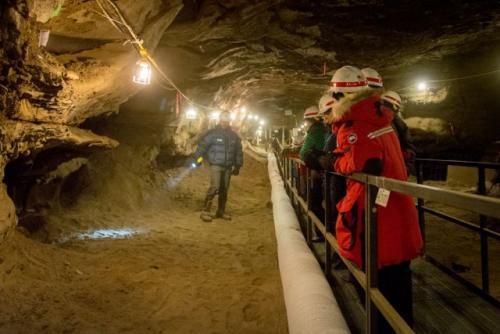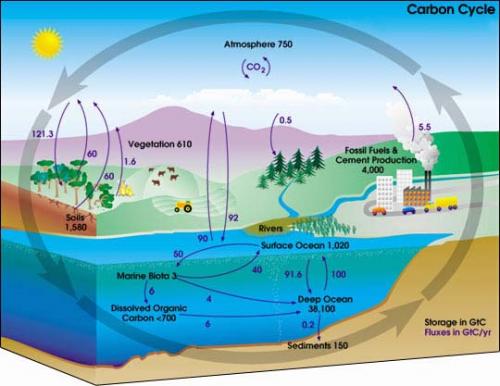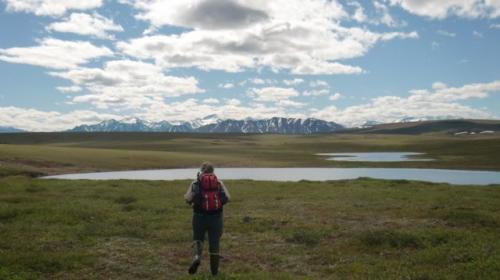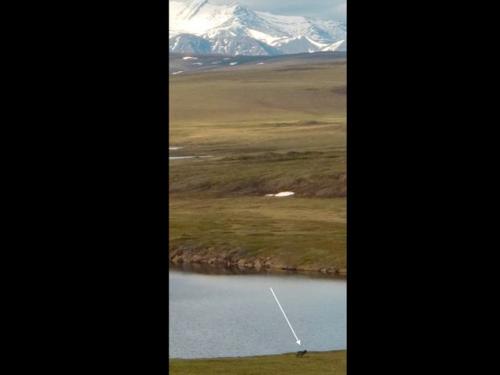I accidentally posted this journal under a different expedition. Time to fix that!
What is PermafrostPermanently frozen ground.?
If you've been reading my journals you've noticed that I have mentioned permafrost. If you've been in an environmental science class, or read news articles about climate change you probably have also come across this term. This entry serves to explain what permafrost is, why it is special, and why it is so tied to climate change.
Let's break the word down: perma- Like permanent = doesn't change or go away. -frost Frozen

So if we put those together permafrost = permanently frozen, and in this case we are talking about soil. So permafrost is permanently frozen soil.
How long does it need to be frozen for?
Many people in colder climates- including parts of Colorado- observe, "the ground in my backyard freezes in the winter, does that mean that it is permafrost?"

The answer is no. If the ground freezes for only part of the year, but thaws for a period of time, say for instance in the summer, it is not considered permafrost. We need it to stay frozen longer.
The ground needs to stay frozen for the entire year for two or more years!
Where is there permafrost?
PermafrostPermanently frozen ground. is found in cold climates, such as the arctic. The uppermost layers of the ground thaw in the summer, or nothing would grow, but not far down in the soil there's a frozen layer. In the low arctic- which includes the arctic regions in Alaska- permafrost begins about 30 cm (~1ft) to 1 m (~3ft) below the surface. This frozen layer then extends for around 200 m (~650 ft)!
Why does it matter?
Frozen ground means that there is no liquid water, and life needs liquid water in order to survive. So this layer of frozen ground is like your freezer, nothing really goes on there, it just sits and waits.
The thawed layer of soil above the permafrost is called the active layer this is where all of the action happens. Plant roots can grow here, but not into the permafrost, animals can burrow in the active layer but also have to stop when they reach permafrost, and water can flow here, but is trapped when it hits the permafrost.

Sometimes as the ground thaws it can sink, or if it is on a hillside it will slide off causing the thermokarst much like we have seen at Wolverine Lake and NE-14.
How is it tied into climate change?
Also just like your freezer, it can begin to thaw. As stuff in your freezer thaws it can start to go bad if you don't use it. It can get moldy and start to break down and decompose. This material in the permafrost, once frozen, also thaws and can start to be broken down.
What happens when things decompose?
Decomposition is the break down of once living material (or what we often call biotic or organic material). This break down releases what was contained inside of the living material, the big problem with the release is carbon, in the form of carbon dioxide and methane.
What breaks down the organic material?
Microbes of course! Well they play a role, at least. There are also studies going on examining how ultraviolet light (UV) also breaks down materials to release carbon. There is another project going on, you can check out their expedition here: Regina's journal
So what?!
Carbon released into the atmosphere is changing a balance. This carbon was once contained within the soil, not doing much. It is instead transferring the carbon into the atmosphere. Excess carbon in the atmosphere causes the air to change- specifically helps it to retain more heat. Think about it like a blanket. The thicker the blanket the warmer it is. So if the atmosphere is a blanket, adding more carbon dioxide causes it to be thicker and therefore hold in more heat over the earth.

This change of balance, and warming is causing a number of things to change on our planet, and a major source (though certainly not the only source of carbon) of carbon being released is from permafrost.
It is also a positive feedback loop, meaning that as temperatures warm -> permafrost melts and releases carbon -> this carbon warms the air causing even more -> and permafrost melts further (the cycle just keeps pushing further and further the next direction)!
Species Journal

Today was a busy day out in the field. There was a number of teams (all working on slightly different projects) all heading to the same series of lakes to gather samples, it is a big two-day undertaking called the I-series. This sampling happens 3x a summer. The purpose is to sample all of the streams and lakes that feed into Toolik Lake, or in other words we wanted to sample the Toolik watershed.

Team Microbe flew out in two helicopter trips (and we saw a lone wolf not to far outside of camp!). It was a beautiful day, and our view simply could not be beat. There was a intermittent breeze so we did have times when we were mosquito free! We gathered our first set of samples and headed back to the lab to process those. Tomorrow we head out for the second day of sampling in this series.

I don't have a wolf species journal from my students, so instead here is a red fox!
Be sure to tune in!
I finished off the evening by preparing for my PolarConnect event this Friday. at 11:30 AKT [12:30pm PDT, 1:30pm MDT, 2:30pm CDT, 3:30pm EDT]. I would love to have all of you join in to learn more about my experience in the arctic and Byron's research. It is free and easy, for instructions click here!


Comments